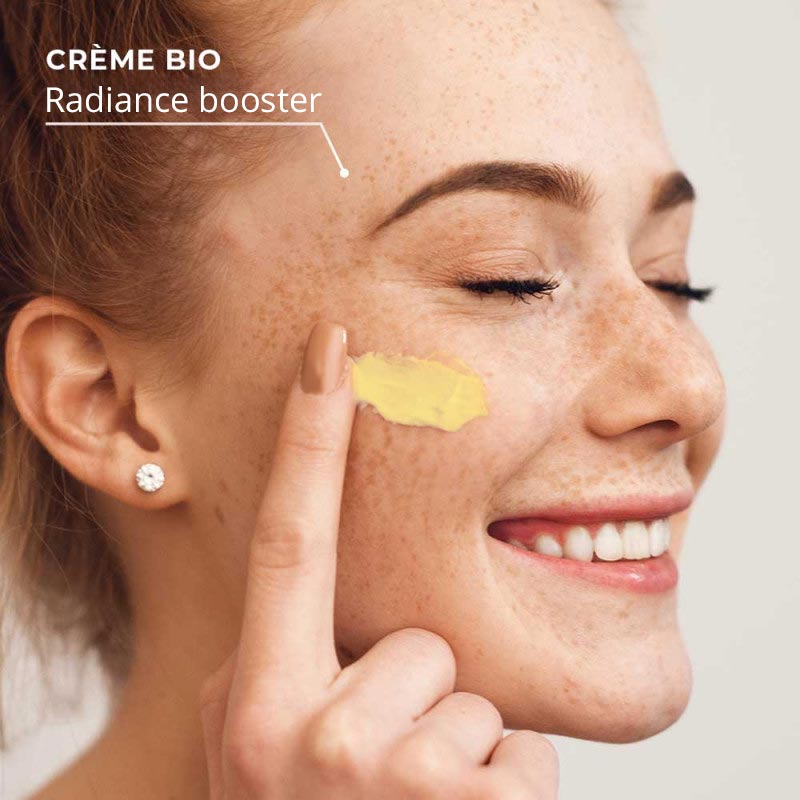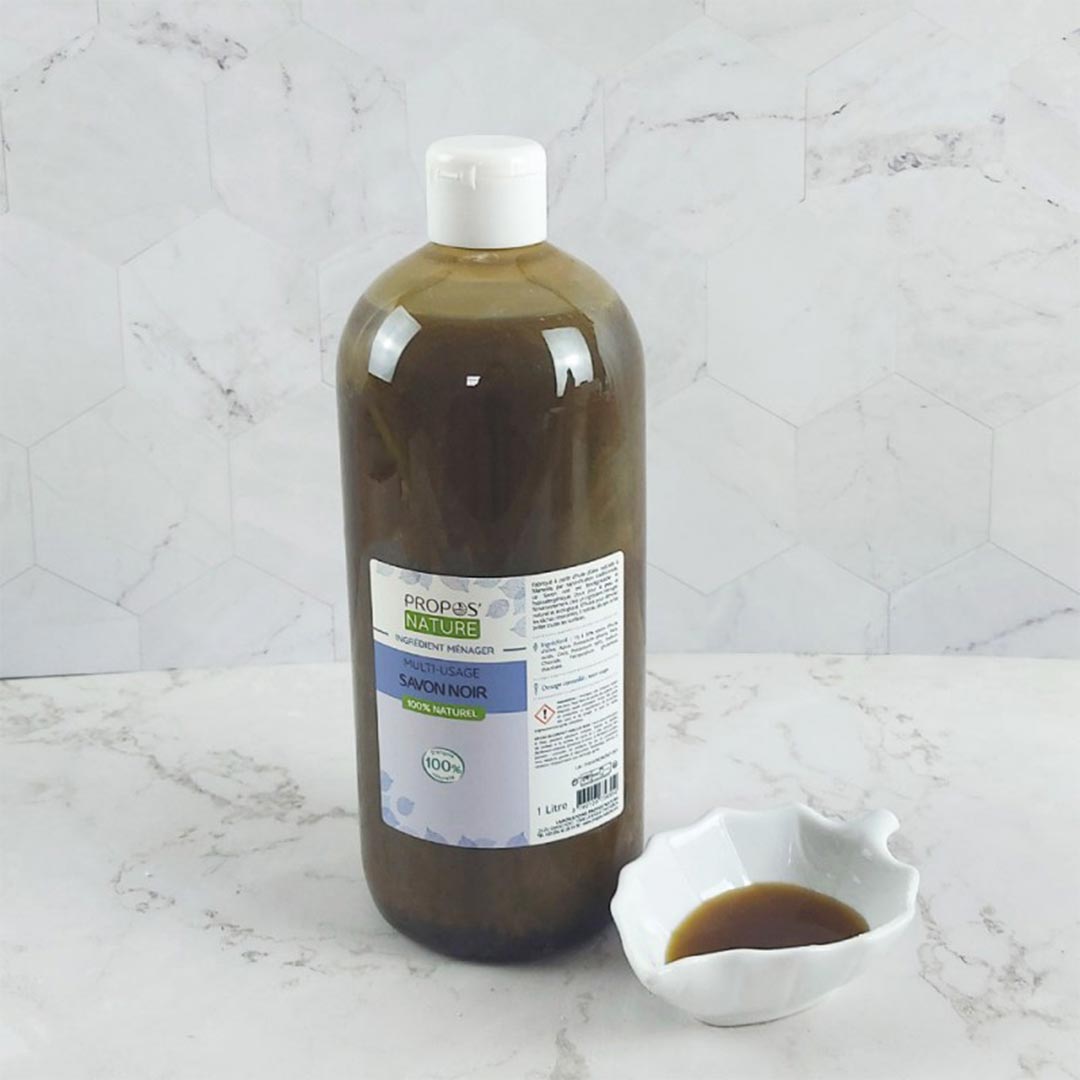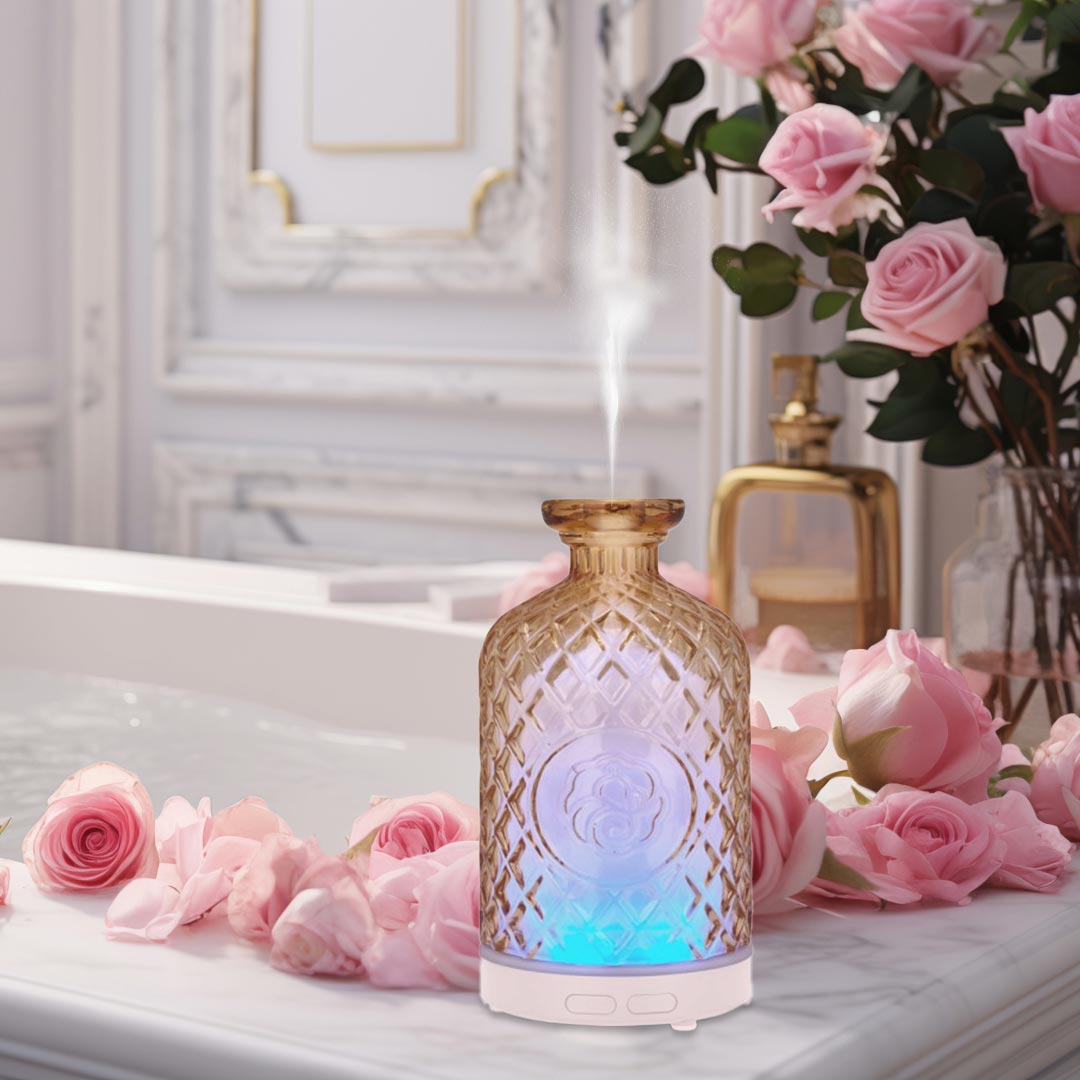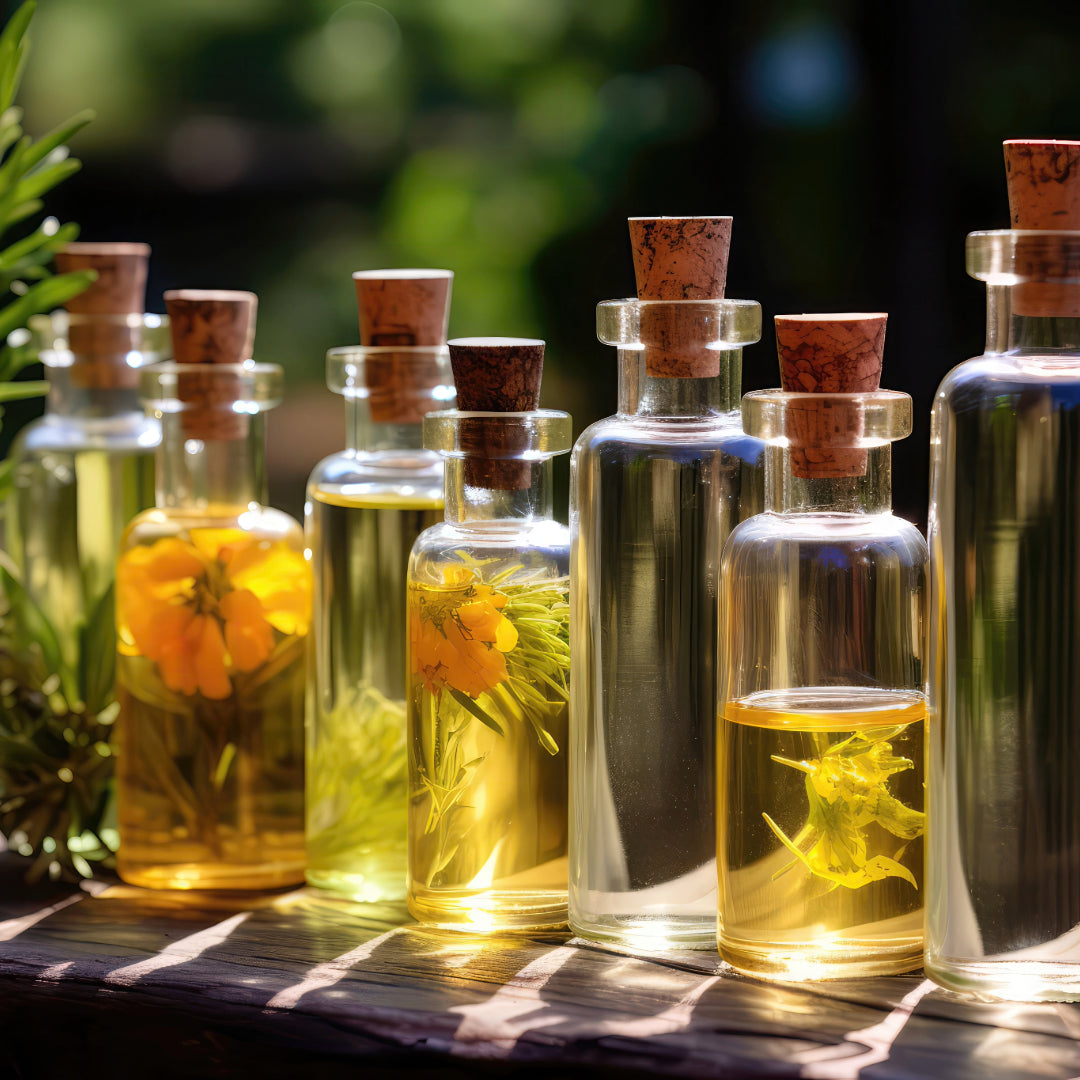Exclusive Guide to Cedarwood Atlas


Cedrus atlantica
Origin: Morocco
Distilled part: Needle shoots
Extraction method: Steam distillation
Cultivation: Certified Organic farming
Botanically and Biochemically Defined Essential Oil (HEBBD), chemotyped (HECT)
Color: Yellow to brown
Scent: Deep, woody, balsamic, and very pleasant; like sandalwood
Note: Base note
Plant Family: Pinaceae




SUPER POWERS
Antifungal
- prevents or kills fungus growth
Anti-inflammatory
- reduces inflammation and swelling
Antiseborrheic
- relieving the symptoms of seborrhea or seborrheic dermatitis
Antiseptic
- prevents or combats bacterial infection
Antisudorific
- helps reduce sweating
Depurative
- cleanses and removes impurities and toxins from the blood; purifies the blood
Relaxant
- promotes relaxation or reduces tension
Restorative
- ability to restore health, strength, or well-being
Tonic
- refreshes, revitalizes and invigorates body functions

USAGE TIPS

Dry scalp
Mix 5 drops of cedarwood with 30 ml of coconut oil.
Massage it on your scalp for 5 minutes, then let it sit on for 30 min. Then wash it out with shampoo (to get rid of the oily feeling of the hair, massage in your shampoo before you add water to rinse.

Bronchitis & Coughs
Mix 12 drops of cedarwood in 30 ml of aloe vera gel or carrier oil. Massage your chest, throat, back of neck, and wrists.

Eczema
Add 12 drops of cedarwood to 30 ml of coconut or jojoba oil and massage the area. For elderly and children add 6 drops to 30 ml of carrier oil.

Wounds
To help heal wounds or infections, mix 12 drops of cedarwood atlas oil with 30 ml of coconut oil and gently rub the mixture on the affected area.

Astringent
Cedarwood has tightening properties as well as an acne treatment; add 1-2 drops to your toner or mix it with organic jojoba oil or aloe vera gel (1 teaspoon- 5ml). It tightens pores and gives a refreshed feeling.

Insect Repellent
This is the perfect repellent to use during daytime, because cedarwood is not sun-toxic as lemon and lemongrass for instans. Add 5-7 drops per 30 ml of cream/oil. Diffuse it on your patio.

Acne
Cedarwood oil is fantastic for managing sebum production, thanks to its robust antibacterial and antiseptic qualities. It's especially great for tackling acne. To use it, simply blend 4 drops of cedarwood oil with 1 teaspoon (5ml) of coconut oil. Then, gently massage this mixture onto your face and neck. This method is a super effective and natural way to keep your skin looking healthy and clear.

Anxiety
Cedarwood oil helps to reduce anxiety and calm the mind. Apply 3 drops of the cedarwood oil onto a tissue or in an inhaler, and inhale throughout the day.

Bladder Infection
Mix 4 drops of cedarwood oil with 1 tablespoon (15ml) of your chosen carrier oil, and massage it into your lower abdomen and lower back. Cedarwood oil is an excellent tonic for the urinary system, offering effective support in clearing bladder infections. This soothing blend can be a gentle yet powerful way to enhance urinary health.

Cellulite
Cedarwood oil is an excellent choice for tackling cellulite because it helps decongest sluggish tissues and draws out excess fat trapped between them. For a powerful anti-cellulite treatment, mix 6 drops of cedarwood oil with 1 tablespoon (15ml) of coconut oil. Massage this blend into the affected areas daily for optimal results.
Coughing
Adding 3 drops of cedarwood oil to a steam inhalation can significantly enhance your respiratory health. This method helps clear air passageways by breaking up and expelling mucus, making it easier to breathe. It’s a simple yet effective way to maintain clear and healthy respiratory function.

Dandruff
For dandruff, cedarwood oil is a game-changer. Mix 6 drops with 1 tablespoon of olive oil, and massage this blend into your scalp. Let it sit for 30 minutes before rinsing out. Alternatively, you can add 5 drops of cedarwood oil to your shampoo when washing your hair.

Fluid retention
Mix 7 drops of cedarwood oil with 2 tablespoons (30ml) of coconut oil, and massage into your body. Alternatively, blend 3 drops with 1 tablespoon (15ml) of coconut oil, and massage into the soles of your feet. Cedarwood oil acts as a mild diuretic, helping to reduce fluid retention effectively.

Hair Loss
Mix 3 drops of cedarwood oil with 1 teaspoon (5ml) of carrier oil and rub it into a bald spot twice daily to promote new hair growth. Regular use is recommended for best results.

Insomnia
Mix 5 drops of the oil with 1 teaspoon (5ml) of carrier oil and massage into your feet before bedtime to help with broken sleep or insomnia. Alternatively, place 2 drops onto your pillow for a restful night.

Mental Clarity
Diffuse 4 drops of cedarwood oil to fill the room with an aroma that promotes focus and calm, enhancing attention and concentration. Alternatively, mix 2 drops with 1 teaspoon (5ml) of carrier oil, and massage into the back of the neck for similar benefits.

Muscular Spasms
Mix 5 drops of cedarwood oil with 1 tablespoon (15ml) of carrier oil, and massage into the affected muscle daily to reduce spasms. The warming properties of cedarwood oil also help relieve muscular aches and pains, providing a calming, balancing effect on muscles.

Pore Size
Blend 4 drops of cedarwood oil with 1 teaspoon (5ml) of coconut oil, and massage into your face, focusing on the upper cheeks, nose, forehead, and chin. The astringent properties of cedarwood oil help tighten and tone pores.
Skin type
Cedarwood atlas can be used alone or in blends for these skin types:
- Balanced/Normal
- Aging
- Dry
- Oily
- Blemished (pimples, acne or other)

Skincare
Cedarwood Atlas essential oil is a versatile and beneficial ingredient in skincare, offering a range of properties that can enhance your skin's health and appearance. Here’s how you can use it effectively:
Balancing Oil Production:
Cedarwood Atlas oil is particularly good for balancing oil production in the skin. It helps regulate sebum levels, making it excellent for both oily and dry skin types.
Antibacterial and Antiseptic Qualities:
Its antibacterial and antiseptic properties make it effective in treating acne-prone skin. It can help prevent breakouts and soothe existing acne by reducing inflammation and clearing bacteria from the pores.
Astringent Properties:
The astringent effect of Cedarwood Atlas oil helps to tighten pores and firm the skin, which can be particularly beneficial as part of an anti-aging skincare routine.
Soothing Irritation:
It can soothe irritation, reduce redness, and assist in healing minor cuts, scratches, and other blemishes due to its calming properties.
Promoting a Clear Complexion:
Regular use can enhance the overall appearance of your skin, promoting a clear, healthy complexion.
Method of use & Amount to use
Aroma diffusers
Use 5-15 drops in your diffuser or the amount suggested with your diffuser.
Baths, Hot tubs, Jacuzzis
Bath: Diluted 3-8 drops
Start by running your bath as you normally would and keep the bathroom door closed to retain the aroma. Essential oils can be applied directly in their concentrated form or diluted.
For dilution, use a carrier oil, milk, milk powder, vegetable glycerin, seaweed powder, herbal powder, baking soda, salt, or Epsom salts to prevent skin sensitivity.
Add the essential oil to the bathwater, either neat or diluted, then stir the water with your hand to disperse the oil evenly before entering the tub. This method helps distribute the essential oil throughout the bath for a more enjoyable experience.
Hot tubs & Jacuzzis: up to 8 drops
Mix the essential oil into the water thoroughly using your hand. Since essential oils do not dissolve in water, they may leave residues in or around your pipes.
Compresses
3-10 drops in 120 ml of water
Learn more
Face masks, oils, and tonic
Face masks: 1 or 2 drops per 2 tbs. (15ml) of natural facemask.
Face oils: 12 drops in 30ml of carrier oil. For elderly and children use 6 drops per 30ml of carrier oil.
Use a dark-colored glass bottle, which helps protect your oils from light degradation. First, pour in the carrier oil. If you’re using a single essential oil or a premixed blend, add it directly to the carrier oil. If you’re crafting your own unique blend, mix your essential oils together first, then integrate the desired number of drops into the carrier oil. Remember, a little goes a long way, so only use a small amount for each application. Click here to read more about which carrier oil to choose.
Face tonic: 8-15 drops in 100ml of spring or distilled water or hydrosol.
Combine the oil and water before filtering through an unbleached paper coffee filter.
Our 100% organic and natural hydrosols can be used directly as a tonic. Shut your eyes and spray your face. Or spray a cotton pad and wipe your face with it.
Inhalation from bowl
3-5 drops per bowl of steaming hot water.
To use essential oils in steam inhalation, start by bringing a pot of water to a boil and then removing it from the heat. Add a few drops (typically 3-5 drops) of your chosen essential oil to the hot water.
Carefully lean over the pot, drape a towel over your head and the pot to trap the steam, and breathe deeply for several minutes to inhale the aromatic vapors, which can help relieve nasal congestion and other respiratory issues.
Lotions & Creams
12 drops to each 30 ml of natural, unfragranced lotion or cream.
You can make your own face cream with our neutral face cream as a base. For a 2% (adults) dilution use 40 drops in this 100 ml cream base.
For elderly and children use 20 drops (1%) in 100ml of cream.
Massage oil (for body)
12 drops to each 30 ml of carrier oil.
For elderly and children use 6 drops per 30ml of carrier oil.
Pillows
Place 1-3 drops of essential oil on the corner or underside of a pillow away from the eyes.
Room sprays
As room purifier: 10-20 drops per 475 ml of water.
As a general fragrance: 8-10 drops per 475 ml of water.
Scalp treatments
Add 6 drops in 15 ml of Jojoba oil or aloe vera gel. Shake well. Use 2-3 drops of your prepared blend for each application. Massage into your scalp. Alternatively, simply add the essential oil to a bottle of final rinse water after washing the hair.
Shampoos
5-10 drops in 100ml.
Essential oils can be added to any unscented shampoo that is composed of organic natural ingredients.
Showers
1-5 drops.
First, complete your usual washing routine. After that, apply a few drops of essential oil onto a washcloth or sponge and briskly rub it over your body while standing under the shower's running water. Inhale deeply through your nose to enjoy the aromatic steam, being careful to avoid applying the oil on your face and sensitive areas.
Sprays & Mists for Face and Body
For body: 10-20 drops to each 475 ml of water or hydrosol.
For face: 2-5 drops to each 240 ml of water or hydrosol.
Add the essential oil to warm water or hydrosol. Shake thoroughly, pour through an unbleached paper coffee filter, and place in a spray bottle. Cool before using.
Shake before each use.
Keep eyes closed when spraying the face.
Washes
15-32 drops in 240 ml of warm water.
A wash is a prepared mixture for washing infected areas such as cuts, grazes, and wounds.
Mix the essential oils and water together in a bottle and shake well. Keep it stored in the fridge for no longer than 14 days. Shake before each use.

Aromatherapy's Base Notes:
Aromas categorized as base notes are usually heavy and soothing. They evaporate slowly, and their scent can last for up to a week. They have a very powerful impact on the mind and emotions, making them ideal when mental and emotional calm is needed. Base notes can heal the body from the inside out and treat a wide range of ailments, from dry skin to circulatory or digestive issues. They can also strengthen a weak immune system and have a sexually stimulating effect.
Typical Base Notes:
Woody oils:
Cedarwood, Patchouli, Sandalwood, Rosewood
Powerful floral oils:
Ylang-ylang, Rose, Jasmine
Resin oils:
Frankincense, Myrrh, Benzoin
Understand the Notes of Scents
In aromatherapy, the scent of an oil is often referred to as a "note." The secret behind a truly great fragrance is finding the perfect balance between the notes. Aromatherapy is about scents, and with practice, you will be able to recognize an oil's fragrance even if you might not know which plant the oil comes from. For example, you will be able to distinguish between citrus and floral scents or woody and minty fragrances. The scent is determined by the chemicals an oil contains. Because oils that smell alike often contain the same chemicals, they typically have similar properties.
Oils are categorized into so-called base, middle, and top notes. Knowing an oil's note is important when blending oils. A good blend—like most perfumes—normally contains a mix of all three notes, where the ratio between them varies depending on what the blend is used for. Additionally, an oil can contain more than one note—for example, ylang-ylang contains traces of all three notes and is often considered the perfect fragrance.
When creating a new fragrance, whether it's for a perfume or an aroma diffuser, you should use between 4-7 oils per blend. First, decide what type of blend you want to create, such as a refreshing one, and then choose notes with these characteristics to make up the main content of the blend. Dissolve the mixture in a carrier oil if you want to use it on the skin (12 drops in 30 ml of carrier oil).
| Blend | Top note | Middle note | Base note |
|---|---|---|---|
| Refreshing | 5 drops | 4 drops | 1 drop |
| Relaxing | 1 drop | 6 drops | 3 drops |
| Sensual | 1 drop | 4 drops | 5 drops |
| Balancing | 2 drops | 5 drops | 3 drops |
| Energizing | 8 drops | 1 drop | 1 drop |
PINACEAE PLANT FAMILY
The Pinaceae family, represents the largest and most widespread conifer family predominantly found in the Northern Hemisphere. This family encompasses about 250 species distributed across 10 genera, including some of the most familiar and economically significant coniferous trees such as pines, spruces, firs, and cedars. These trees are the quintessential components of boreal, montane, and temperate forests, and they play crucial roles in their ecosystems by providing habitat, stabilizing soil, and influencing the hydrological cycle. Their ability to thrive in diverse climates, from snowy mountain ranges to temperate forests, underscores their ecological versatility.
In terms of their biological and chemical characteristics, members of the Pinaceae family are notable for their adaptive strategies, particularly their development of complex defense mechanisms against environmental stressors and biological threats. The bark of these trees often contains a rich composition of resins, phenolics, and polyphenols, substances that contribute to their resistance against pests and diseases as well as extreme temperatures. Economically, the wood of Pinaceae trees is highly valued for construction, paper manufacturing, and as a source of turpentine and other resins used in various industrial applications. Additionally, the essential oils derived from these trees are widely used in aromatherapy and natural medicine, credited with a range of health benefits from respiratory relief to stress reduction.
Cedarwood Atlas Blends Well With These Essential Oils
Basil linalol, Bergamot, cardamom, roman chamomile, clary sage, cypress, frankincense, geranium, grapefruit, juniper berry, lavender spike, lemon, lemongrass, marjoram sweet, petitgrain, ravintsara, ravensara (ho wood) rose absolute, rosemary, rosewood, sandalwood, thyme linalol, ylang ylang.

The Main Chemical Composition of Cedarwood Atlas Essential Oil
Cedarwood Atlas essential oil, derived from the wood of the Cedrus atlantica tree, is known for its rich, woody aroma and a complex chemical composition that contributes to its therapeutic properties. The main chemical constituents of Cedarwood Atlas essential oil include:
- Sesquiterpenes: These are the primary components, particularly himachalenes (alpha-himachalene and beta-himachalene), which contribute to the oil’s soothing and grounding effects. They are known for their anti-inflammatory and antimicrobial properties.
- Sesquiterpenols: Compounds like atlantol and cedrol are significant constituents that lend the oil sedative properties, making it beneficial for promoting relaxation and improving sleep quality.
- Ketones: These compounds, such as atlantone, contribute to the expectorant properties of the oil, helping to clear respiratory congestion.
Together, these compounds imbue Cedarwood Atlas essential oil with its characteristic properties that make it useful for skincare, emotional balance, and respiratory support. Its ability to regulate sebum production, its calming effects on the mind, and its role in respiratory health are all derived from this intricate chemical synergy.
What is a Chemotype in Essential Oils?
Chemotypes in essential oils refer to the different chemical compositions that can occur in the same plant species due to variations in their growing conditions, harvest times, or geographical locations. These variations lead to the production of essential oils with distinct chemical profiles, each possessing unique therapeutic properties. Understanding chemotypes is crucial for aromatherapy and medicinal applications, as the efficacy and safety of the oils can vary significantly based on their chemical makeup.
Here's a breakdown of what defines a chemotype and why it matters:
1. Genetic and Environmental Influences: A chemotype is often influenced by the plant's environment, such as altitude, climate, and soil composition, as well as genetic factors. These variables can affect which chemical compounds are predominant in the oil.
2. Chemical Composition: Each chemotype of an essential oil will have a dominant chemical compound or set of compounds that characterize it. For example, Rosemary essential oil can be found in several chemotypes, such as cineole, camphor, and verbenone, each named after its principal component, which dictates its therapeutic properties and uses.
3. Therapeutic Properties: The presence of different chemical compounds means that each chemotype can be more effective for different health concerns. For instance, the cineole chemotype of Rosemary is excellent for respiratory issues due to its expectorant properties, whereas the camphor chemotype is more suited for pain relief and circulatory problems.
4. Safety and Application: Some chemotypes may be safer or more appropriate for certain applications than others. For example, an essential oil chemotype high in ketones might be more neurotoxic and thus used with more caution, particularly around children or pregnant women.
Cedarwood Atlas is Safe to Diffuse around Pets
Pet Safe
If you have dogs and cats in the house, these are the recommendations on how to diffuse your essential oils in a safe way: only use 3-4 drops of a particular essential oil in a water based aroma diffuser (UltraSonic).
Use no more than 4-6 drops total if using more than one essential oil, or use the amount in the diffuser recipes.
Be sure your aroma diffuser is in an area where your pet cannot knock it over. Always diffuse in an open area with the door open so your pet can leave the room if desired.
If your pet is sensitive to an oil you are diffusing, stop diffusing and get your pet outside for some fresh air. Contact your veterinarian if you are concerned.
A Little History
Cedarwood Atlas, derived from the *Cedrus atlantica* tree, has a rich history that dates back to ancient times. This tree is native to the Atlas Mountains of Morocco and Algeria, and it is closely related to other cedar species found in the Middle East and the Himalayas. The oil extracted from Cedarwood Atlas has been valued for centuries for its aromatic and preservative properties.
Ancient Civilizations:
The use of cedarwood can be traced back to ancient Egyptian and Sumerian cultures. The Egyptians used cedarwood in the mummification process, utilizing its preservative and aromatic qualities to help maintain and protect the mummies. They also used the oil for cosmetics and perfumery. In Sumer, cedarwood was used in medicine and was also a staple in religious ceremonies, believed to help connect with the divine due to its uplifting and grounding aroma.
Construction and Craftsmanship:
Cedarwood has historically been prized for its durable and resistant wood, which is resistant to decay and insects. This made it an ideal material for building ships, temples, and palaces. For instance, the famous cedars of Lebanon were extensively harvested by ancient Phoenicians for shipbuilding and by other civilizations for constructing religious and monumental buildings.
Medicinal Uses:
Throughout history, cedarwood oil has been used for its health-promoting properties. It was used to treat a variety of ailments, from skin and respiratory issues to infections and psychological disorders, owing to its antifungal, antiseptic, diuretic, and astringent properties.
Spiritual Significance:
Cedarwood has also held significant spiritual value; it was used in incense and religious rituals to cleanse, purify, and protect. This practice was common among various cultures and is still utilized in some traditional ceremonies today.
Today, Cedarwood Atlas continues to be used in aromatherapy, perfumery, and natural medicine, cherished for its rich, woody scent and its soothing, grounding effects on the body and mind. Its historical and cultural significance adds to its mystique and continued popularity in holistic health and spiritual practices.
Storage
Essential oils are sensitive to UV: always keep them in their original bottles (amber glass with codigoutte).
We advise you to store them in a cool place without light after opening.
For your mixtures, cosmetic and culinary preparations, always use a new bottle to avoid interactions.
Disclaimer
This information is intended to educate and inform, and are not intended to diagnose, treat, cure, or prevent disease. It is always recommended to consult with a healthcare professional or veterinarian before starting any regime with Essential Oils.















